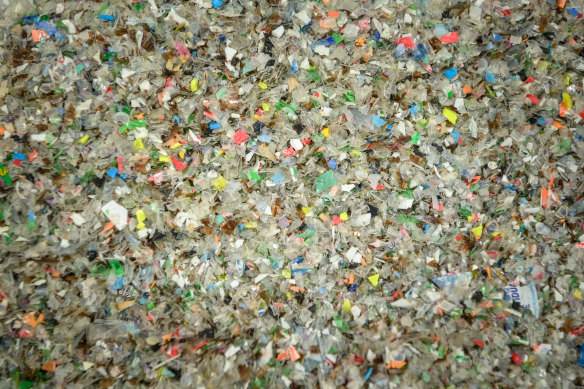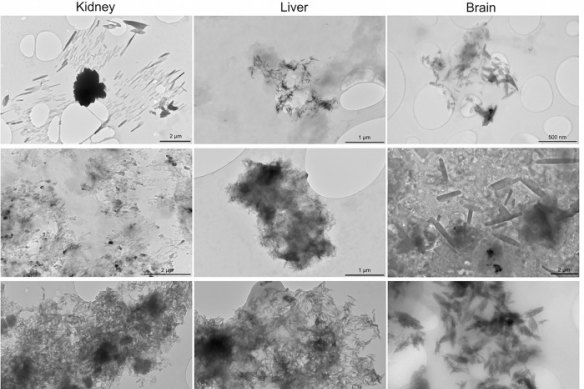By Angus Dalton
Microplastics made up 0.5 per cent of the average weight of human brain samples tested in a US study, and alarmed researchers said levels of plastic in brain tissue have increased by 50 per cent since 2016.
Off the back of his preliminary results, toxicologist Dr Matthew Campen from the University of New Mexico suggested plastic may have been acting for decades as an unrecognised “dark matter” driver of global health issues including dementia and plunging male fertility.

Microplastics and nanoplastics have been discovered at alarmingly high levels in human brain tissue.Credit: Justin McManus
Campen previously made news when he discovered microplastics laced every single placenta and testicle sample he tested.
But his latest study – which has been released as a pre-print, meaning it’s not yet peer-reviewed by a journal – found 24 human brain samples contained micro- and nanoplastics (MNPs) at levels seven to 30 times higher than other tissues in the body.
“We anticipated the brain would be protected from the plastics and were completely wrong,” Campen said. “Our initial thoughts were that the liver would bear the brunt of the absorption from all the food we eat and then clear the plastics.”
Campen was so taken aback by the levels of plastic he sent the brain samples to a colleague in Oklahoma, whose lab found similar results.
Some scientists, however, have raised concerns that detection methods aren’t yet good enough to accurately quantify levels of MNPs in the body, and the study acknowledges its analysis methods are “yet to be widely adopted and refined”.
But some level of microplastics has been detected in almost every human tissue and bodily fluid including blood, lungs, breast milk and bone marrow, and scientists are racing to identify potential health impacts.
“At this point, there is nothing known, but the plastics may be a ‘dark matter’ that have actually been driving health issues for decades, completely unrecognised,” Campen said.
“The relationship with male fertility, for instance, is a clear example of a global decline that lacks a coherent cause. Plastics may be the driver.”

Shards of microplastic captured in kidney, liver and brain samples.Credit: Dr Matthew Campen et al
Campen believes the effect of plastic on dementia, autism, ALS and Parkinson’s demands urgent investigation.
There’s no strong evidence yet that directly ties the presence of microplastics in the body to specific health problems. A small but influential Italian study in March, however, found half of people undergoing surgery for clogged arteries had blood vessels riddled with microplastics, and those patients had a far greater chance of heart attack, stroke and death.
Evidence is far stronger concerning the health risks of chemicals associated with plastic, for example chemicals added to make plastic flame-resistant or non-stick including BPA and PFAS “forever chemicals”.
An Australian review published on Tuesday aggregated findings from studies involving 1.5 million people and concluded plastic-associated chemicals were linked to a raft of health problems including diabetes, heart disease, endometriosis, damaged sperm and low IQ.
“When people make plastic, there’s about 16,000 different chemicals used, and 11,000 of those have no hazard criteria we can find. So we’re flying blind,” said co-author of the review, Emerita Professor Sarah Dunlop from the Minderoo Foundation and the University of Western Australia.
The review didn’t scrutinise the health effects of microplastics themselves because there are virtually no papers that accurately measure MNPs in the body and extrapolate health effects.
“But the warning bell is there – once we have the right measurement techniques to ensure what we’re picking up in the human tissue is actually plastic, we can look at health impacts,” Dunlop said.
Sources of microplastics include plastic bottles and food containers, air pollution flecked with particles shed from road tyres, and synthetic fibres in clothes, blankets and carpets.
The Examine newsletter explains and analyses science with a rigorous focus on the evidence. Sign up to get it each week.